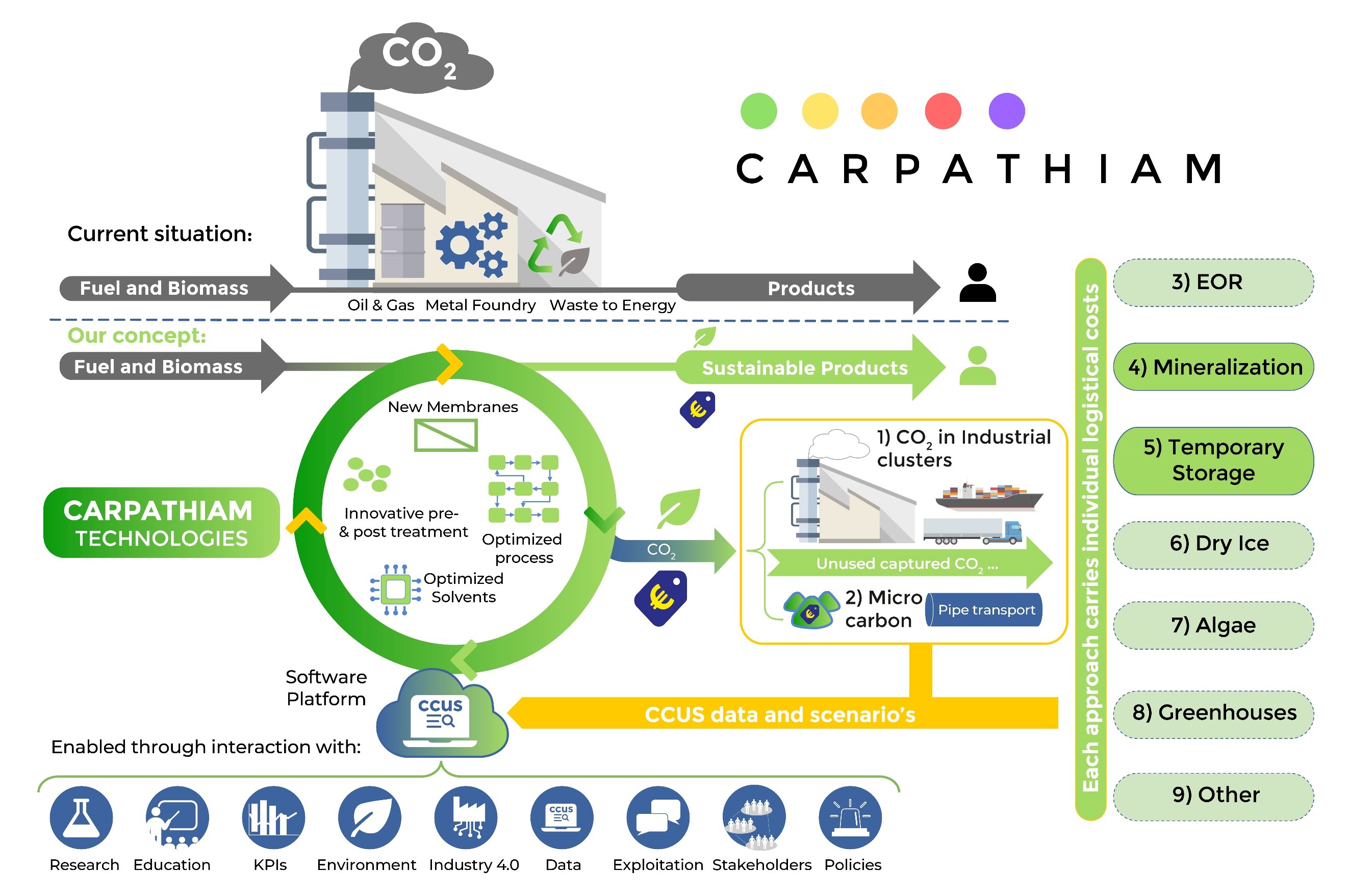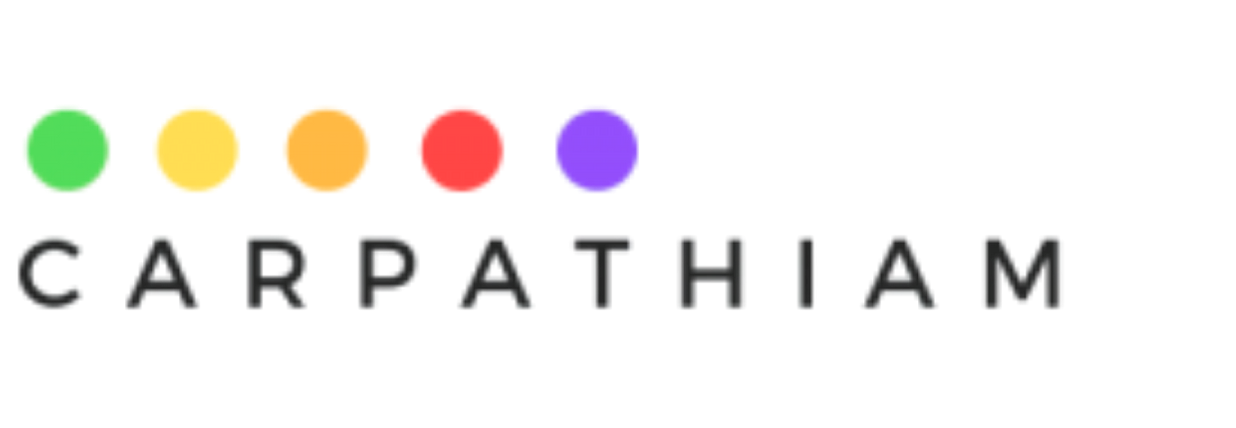The Carpathiam project:
Carbon capture storage and utilization with a decision tool, SepaRaptor Amines and Membrane technologies
The idea, which the Carpathiam project is based on, is to build a software decision tool platform to significantly increase the adoption of ‘Carbon capture storage and utilization’ (CCUS). Simultaneously, the project aims at lowering the (energy) cost of carbon capture by implementing the beneficial properties of SepaRaptor, membranes and solvents in a societal acceptable manner. The main target is hereby Eastern Europe.

CO2 Capture and Storage
CO2 capture and storage from power plants could play a significant role in the reduction of global greenhouse gas emissions, which cause global warming. CO2 is separated from industrial and large stationary energy related sources, such as powerplants. Subsequently, it is reintroduced into industrial processes or transported to a storage location and isolated from the atmosphere, where the concentration of harmful greenhouse gases can be stabilized. Technologies related to this process are not profoundly used on a commercial scale yet. Where industries make use of fuel and biomass in their production processes, side products and emissions remain unused and lead to environmental pollution. Testing new technologies, Carpathiam thrives for the creation of sustainable products instead. Making use of new membranes, innovative pre- and post-treatment, optimized processes and solvents, CO2 can be generated to be used in industrial clusters and commercialized in the form of activated micro carbon.
Unused captured CO2
Different approaches can be taken to utilize or store unused captured CO2. Two approaches of which are the storage of CO2 in minerals such as calcite or magnesite and temporary storage in oceans or geological formations. One possible mitigation strategy is, furthermore, for CO2 to be injected in oil reservoirs within the frame of ‘Enhanced Oil Recovery’. Subliming banks of dry ice are another storage means in discussion. Also applying the captured CO2 in greenhouse settings can be of value. Finally, Algae are a cost-effective option for industries to reduce carbon footprints and can even lead to the generation of useful end-products, such as oil. While all of these approaches show differences in logistical costs, more options are being explored. For transportation purposes high pressured CO2 pipelines and ships could be operated and used.
CCUS software platform
The software platform, which can be developed and enhanced through research and industrial changes, allows for the creation of a more sustainable production cycle. Through CCUS data gathering and observation of energy scenarios, the CCUS software platform can be adjusted for further optimization. Policies, stakeholders in favour, as well as general exploitation can open the gate to a successful implementation of the software technology. Moreover, the key performance indicators measuring the company’s success significantly determine further amendment of the CCUS software platform. With educational means the process and its positive outcome can be put into perspective for the general public, policy makers and industries.
WHAT WE DO...
We are setting specific goals
Tailor
Tailor pre- and post-treatment removal seperator technology.Demonstrate
Demonstrate...
Develop and validate
Develop and Validate...
Replace
Replace...Firmly position
Firmly position...
23
Partners
5
Subgoals
6 - 7
Potential new technologies
OUR PROJECT PARTNERS...
Find out who is involved!
Carpathiam is not just one group.
GET IN TOUCH...
We are happy to hear about your questions and remarks!





